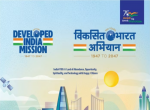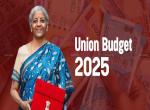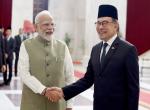When India became independent we embarked on a very ambitious programme of nation building aimed at converting India into a modern State whose economy would be second to none. In 1902 Lt. Gen. Sir Adrian Carton de Wiart, then a young subaltern, stated on being posted to India, “ India, from the start, held no mysterious fascination for me. It was tawdry. It emitted revolting smells and noises”. Well, Nehru decided that this would change, that India would build new temples in the form of dams and power stations, business and industry, prosperous agriculture and, to enable this to happen, we shall build great educational institutions in the field of technology, management, science, medicine, agriculture, social sciences and the humanities. The Indian Institutes of Technology, the great Agriculture Universities, the All India Institute of Medical Science, the Post Graduate Institutes of Medical Education and Research, the Institute of Economic Growth, Jawaharlal Nehru University, the Indian Institutes of Science Education and Research, the Schools of Planning and Architecture and the Indian Institutes of Management are all milestones in our journey of quality higher education. Leading the pack was the Indian Institute of Management, Ahmedabad.
The great business houses in India at the time of independence were, by and large, family run businesses , with the exception of the House of Tata, which had encouraged professionalism in corporate management from the beginning. The Birlas, Singhanias, Mafatlals, Sarabhais, Goenkas, Modi and other Marwari business houses, employed managers for running individual units, but corporate decision making even at micro level was very much a family affair, focused on the patriarch. This worked quite well at a certain scale and in trading, but when the pace of industrialisation gathered speed, the inherent flaws of personalised management began to emerge. What the system cried out for was a new model of corporate decision making and professional management. A complex economic structure has far too many variables, far too many interconnected dependencies which impact each other, for decision making to be totally centralised or left dependent on the whims of a patriarch whose own business experiences and instincts might be anchored in a much simpler past. The genesis of IIM (A) was a realisation by both government and business that a new model of business management must be evolved and a new cadre of professional managers, educated in a dedicated management institute, should be created. From this emerged IIM (A) and the other I.Is.M that have since been set up, thirteen in all at present in the public domain. From this seed have grown renowned institutes in the private sector, including the Narsee Monjee University, S.P. Jain Institute of Management, the India School of Business and XLRI.
The Memorandum of Association (MoA) of IIM, Indore, very similar to that of other IIsM, lays down in the following words the major objectives of the Institute, “To provide training and conduct research in the broad area of management and administration as relevant to the Indian context”. The key words here are “training” , “research” and “Indian context”. One other objective is, “To select and prepare outstanding and talented matured young persons for careers leading to management responsibilities”. It is on the basis of how these objectives have been achieved that one has to judge the success or failure of the I.Is.M. Are they fulfilling the very goals they set themselves when they were constituted? What is the quality of the research, if any, that they are conducting? Is their training and research truly in the Indian context, or are the institutes only trying to become clones of great American business schools such as Harvard, Kellog and Stanford? Or is training some of India’s best students for careers in business now the major objective? In other words, is placement and a lucrative pay package the hallmark of success, or is building new business models which could take us to new heights the benchmark by which we should judge the I.Is.M?
Before one judges one must study the structure of the I.Is.M. All thirteen are in the public domain and they have been created by an executive policy decision of government. The land for each is generously given free of charge by the State Governments of the States in which they are located. For example, IIM Indore has been given 193 acres of prime land at Indore. The entire physical infrastructure has been funded and built by government and any expansion on account of government policy, for example additional enrolment to accommodate OBC quota., is exchequer funded. This is true of even IIM Ahmedabad and IIM Bangalore, which claim that they have enough funds to manage on their own and want zero intervention by government even on key policy issues. Given their way they would like to declare U.D.I (Unilateral Declaration of Independence) a`la Ian Smith, then Premier of Southern Rhodesia (now Zimbabwe), who thought he could prevent black majority rule in the colony after independence by anticipating the event, breaking away from Britain and establishing an apartheid based white minority government and state. Fortunately Britain forcefully intervened and aborted U.D.I, but Ian Smith’s legacy is a deep rooted distrust of the white minority and has resulted in the distasteful doctorial regime of Robert Mugabe. Can the country tolerate U.D.I. by I.Is.M?
The Ahmedabad/Bangalore led cry for autonomy has certain inbuilt defects and dangers which, in the end, may defeat the very purpose for which they were established. An autonomy built on a high fee structure is bound to make money a key determinant which could influence the entire educational programme, with career overshadowing training, research and the Indian context.
This point will be returned to a little later. At present we should examine the question of autonomy. There are allegations that government is inimical to autonomy. This is a complete myth. I.I.M. Ahmedabad led the cry of autonomy in danger because Dr. Murli Manohar Joshi, as H.R.D. Minister, wanted the I.Is. M to keep their fee structure at modest levels. He also offered a cast iron guarantee of government funding to meet all their needs. At least in the I.Is.T and I.Is.M he never tried to superimpose a syllabus, much less a saffron one and despite the delusions of megalomania of one of his officers, V.S. Pandey, the academic freedom of these institutions remained untouched.
The present HRD Minister, Mr. Kapil Sibal, is committed to academic autonomy and has very readily agreed to changes in the MoA of the I.Is.M, as drafted by them. One result is that the Boards of these institutes have constituted themselves into the principal executive body of the institute, to prescribe the course of studies (in I.Is.T, I.Is.I.T and normal universities this is done by the Senate or Academic Council of faculty and experts), to maintain discipline amongst students, etc., The Director only enjoys delegated powers and, under the Board, is required to ensure proper administration of the institute. By way of contrast the Board of Governors of an Indian Institute of Technology and the Indian Institutes of Information Technology is “… responsible for the general superintendence, direction and control of the affairs of the Institute…” and “… take decision on questions of policy relating to the administration and working of the Institute”. About the Director the provisions are “The Director shall be the principal academic and executive officer of the Institute and shall be responsible for the proper administration of the Institute and for the imparting of instruction and maintenance of discipline therein”.
The I.I.T. or I.I.I.T. Board exercises superintendence, and frames policy, the Director administers policy, directs learning and teaching and ensures the discipline of faculty, staff and students. The functional division is clear and unambiguous, leading to harmony.
The I.I.M Boards feel they exercise executive functions and that the Director is on sufferance. In I.I.M. Ahmedabad the then Chairman, Mr. Singhania and the then Director, Dr. Bakul Dholakia were at loggerheads because the Chairman asserted supremacy even in micro management and this did disrupt the even tenor of the Institute. Ravi Mathai, the first Director of I.I.M. (A) treated the Board only as an unavoidable evil, to be marginalised as far as is possible. However, he was uncomfortable with codification of rules, which has led to the present position where the bounds of the powers of the Chairman and the Board and the Director, are not clearly defined and clashes occur in the grey areas.
In I.I.M. Indore this has resulted in the Chairman wanting to treat the Director as a Munim who carries out every order and whim of the owner of the firm. The power of the Chairman to nominate six members to the Board has led to cronyism. There is not a single industrialist of note or head of a large business house on the Board, Mr. Subhodh Bhargava and Mr. Kishore Biyani having quit in disgust. The Institute is now a cesspit of intrigue, with some individual Members of the Board trying to attack the Director directly, instigating indiscipline amongst faculty and engineering joint complaints against the Director. Instead of crushing such insubordination and pulling up Board members for their misconduct, the Chairman is indirectly encouraging one or two members to step up their offensive. Governance has come to an end in I.I.M. Indore and this will both immediately and in the future harm the institute. We urgently need to redefine the respective roles of the Chairman, the Board and the Director of I.Is.M, preferably in the same manner as I.Is.T. and I.Is.I.T so that all ambiguity is removed. Autonomy cannot be an excuse for the Chairman filling the Board with cronies and mediocre people, marginalising the Director and taking over micro-management of the institute in his own hands. In order to check this government must retain a veto, or the power to issue directions which will be binding on all the authorities of the institute if the situation so demands.
This brings us back to the question of fees and the effect it is having on the academic orientation of I.Is.M. For instance, I.I.M. Ahmedabad charges rupees seventeen and a half lakh per MBA course. Other I.Is.M also have a commensurate fee structure, but mutatis mutandis, given the age and reputation of the institute, location, etc. Even the most economic of the I.Is.M, e.g. I.I.M. Indore, is priced out of the reach of even the relatively more well-to-do middle class and is not even in the dreams of those with a lower income. The I.Is.M argue that education loans are available and the Institutes facilitate the process. Even if this were true do the institutes realise what it means to an ordinary family to be burdened with a large loan? The student is under enormous pressure to find a well placed job with a very high salary package so that he can repay the loan. His attention, then, is narrowly centered on increasing his employability rather than acquiring knowledge. Certainly he has little time for research, nor any desire for post graduate or doctoral studies. For the institute also it is the P and PP which counts, that is placement and pay package. Therefore, the cream of the Indian students is sucked into the system, polished up and groomed to become a superior employable product and ejected into the market. This is a soul destroying exercise, kills all research initiative, makes faculty into a shop floor worker who churns out a saleable product rather than a human being with knowledge and provides ample time for intrigue against the Director. Because the fee structure of I.Is.T and I.Is.I.T. is relatively modest the imperative to acquire a job immediately after graduation is not as pronounced as in I.Is.M and there is a better research environment and orientation. Those who are required to train the persons who will manage business must ponder over the points raisd above because it is not simply a management question but is also a serious existential question.
The reality of the Indian economy is that the informal sector employs about eighty-five percent of the entire workforce, the organised sector employs about ten percent and the balance is marginalised or unemployed. With GDP growth of about eight percent, employment is growing at, or is stagnant at, 0.3 percent. Where is the extra money going? Certainly not into job creation. The informal sector has the largest share of employment, but it has low per capita productivity, low wages and inefficiency in production, capital investment, design and marketing. The organised sector has a better capital- output ratio but its employment potential is low. Can we not change the equations and synergise and coordinate the formal and informal sectors so that the productivity of the informal sector and the employment potential of the formal sector both dramatically improve? Can our I.Is.M not take up a major research programme and develop a new paradigm management, working capital, design for production efficiency as also organisation of both production and marketing of the informal sector? The American business schools cannot do this, but our I.Is.M, which are mandated to work in “the Indian context”, can and must do this. If they are unwilling or unable to do this because their P and PP model will suffer, then government must invoke clause (6) of the MoA and take over the administration and assets of the Institute. About this there should be no hesitation because the reverse of the coin of autonomy is accountability and failure to discharge it must carry consequences.
One last point. Legally the I. Is. M cannot award a degree because they do not have an university status. They are, therefore, forced to admit persons who have graduated from an institution which has university status, say I.I.T. Kanpur or ABV- I. I. I.T.M Gwalior, for a post graduate diploma in management. In order to catch them young I.I.M Indore has started a five years integrated course, as is the case with I.I.S.E.R and ABV- I. I. I.T.M, which give a dual degree after five years, B.Sc – M.Sc. in the case of an I.I.S.E.R and B.Tech. M.Tech, or B.Tech-MBA in the case of ABV- I. I. I.T.M, whose Senate has approved a third stream of B.Tech-M. Humanities, the details of which are being worked out. But because an I.I.M. cannot award a degree and no post graduate diploma or degree can be awarded without a basic Bachelor’s degree, the Indore Institute is in a fix. The simple solution to this is for the I.Is.M. to seek legal cover which would make I.Is.M institutions of national importance and give them statutory university status. It seems I.Is.M, especially Ahmedabad and Bangalore, oppose this because they say it will reduce their autonomy, but in reality because they fear it will increase their accountability. The I.Is.T. and I.Is.I.T have not had their autonomy jeopardised by legal cover. One can draft a Bill to provide adequate safeguards for autonomy. It is about time M.H.R.D stopped pussyfooting around and goes ahead with legislation. The I.Is.M will have to fall in line because they will have no option. The Bill can have a separate chapter on regulation of non I.I.M management institutions also.
Government must nurture the I.Is.M., give them autonomy short of U.D.I, but it must not pamper them to the point of their becoming spoilt brats. The taxpayers who helped build the Institutes and the citizens on whose support they prosper demand this as the least that government can do to remind the I.Is.M of the Indian context. Even otherwise the business schools the I.Is.M try and emulate – Harvard, Stanford, Kellog – are all part of an university system, operationally and academically free, but as part of a larger whole. In India they would stand alone, have operational and academic freedom and in themselves be the larger whole, because their universe would be the Institute itself. They could then have their cake and eat it too.
Published Date : 15th March, 2012









Post new comment